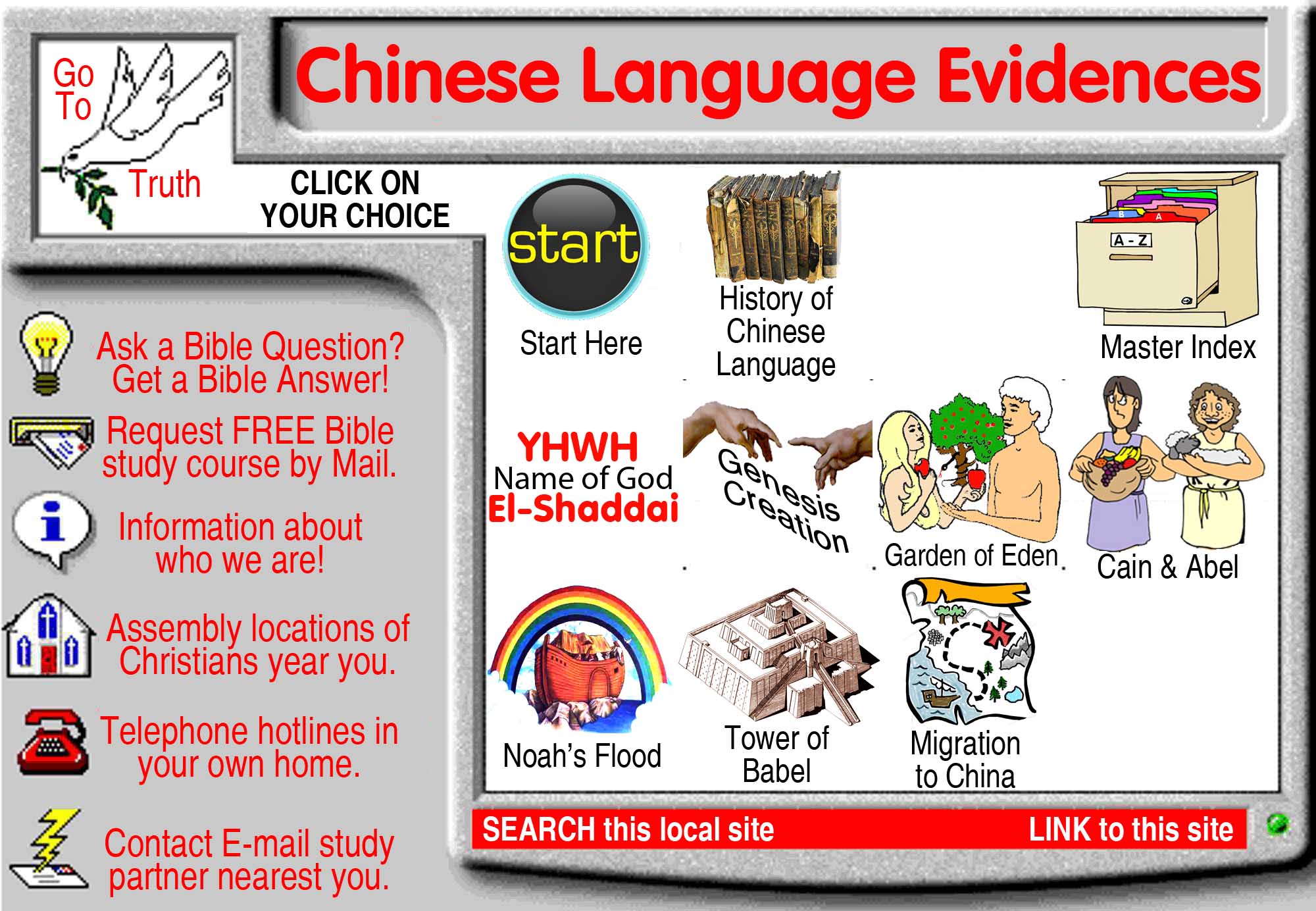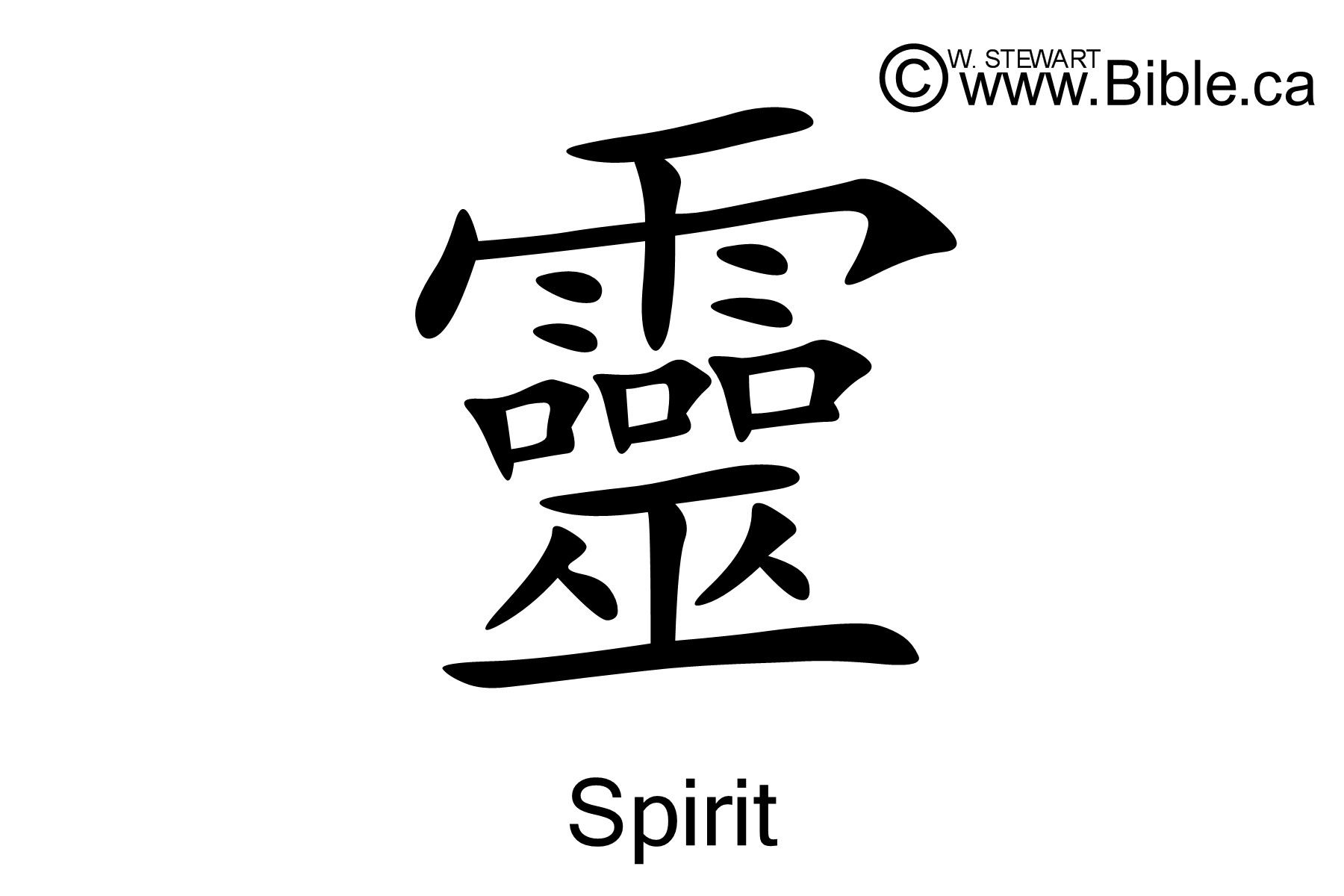
Every culture seems to have it's own peculiar origin story, and the Chinese are no different. Chinese legend speaks of Pan Gu, who separated the heaven and earth from one another, and Nü Wa, who populated the earth with humans.1 However, the etymology of several Chinese characters discount the legends of Pan Gu and Nü Wa, revealing a creation account which parallels the Bible. The significance of this is enhanced with the knowledge that the details herein were recorded in the Chinese language before Moses wrote Genesis.
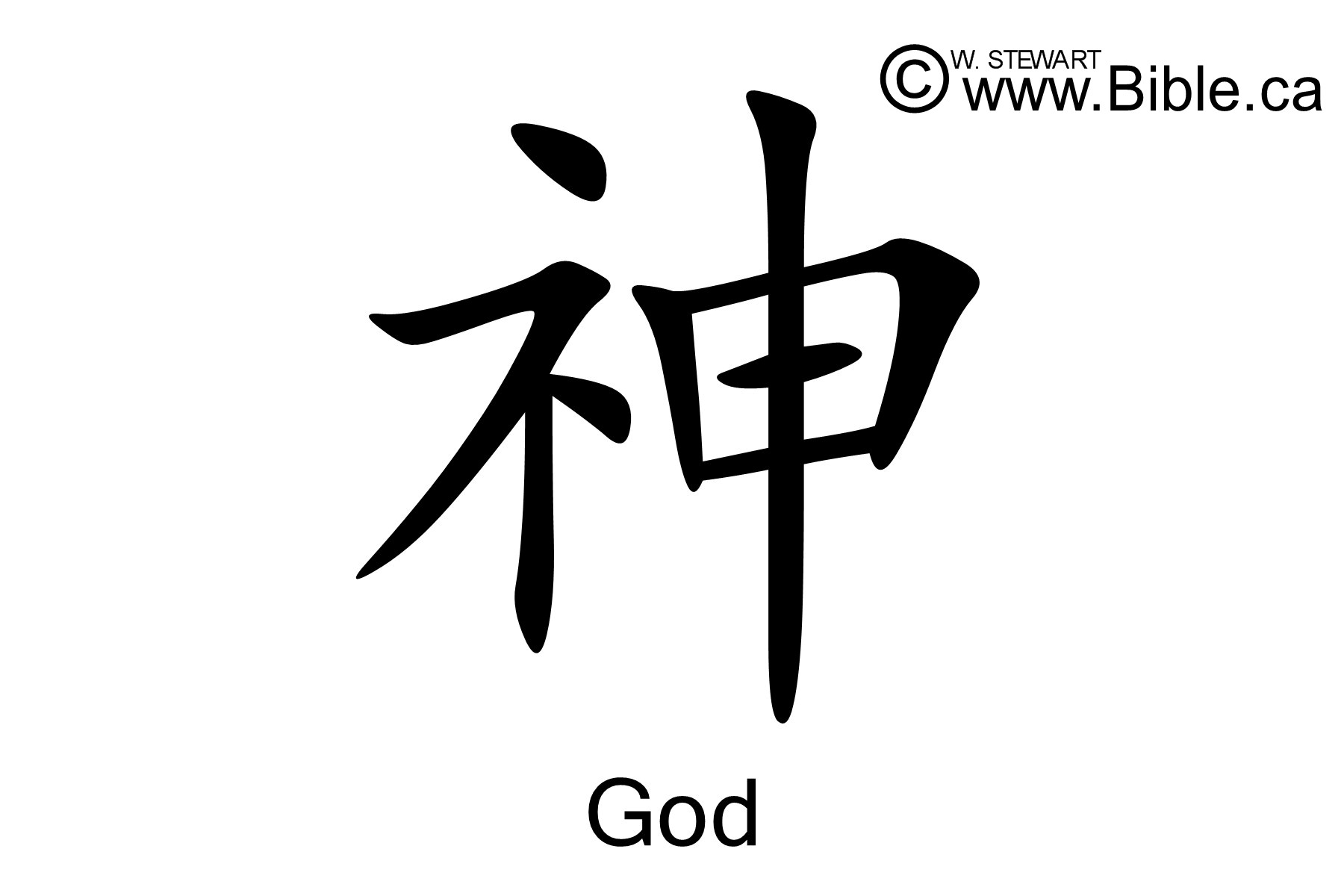
Two of the Chinese words for God (see God in the Chinese Language), Ling and Shén, picture God's role in creation. Ling shows the Spirit of God covering over the waters (Genesis 1:2), and the three persons of God affecting the miracle of creation. Shén identifies God's voice as the active force in creation, as do the Scriptures (Genesis 1:3, 6, 9, 11, 14, 20, 24, 26). This image also shows man, the crowning jewel of God's creation, and the garden in which he was placed.
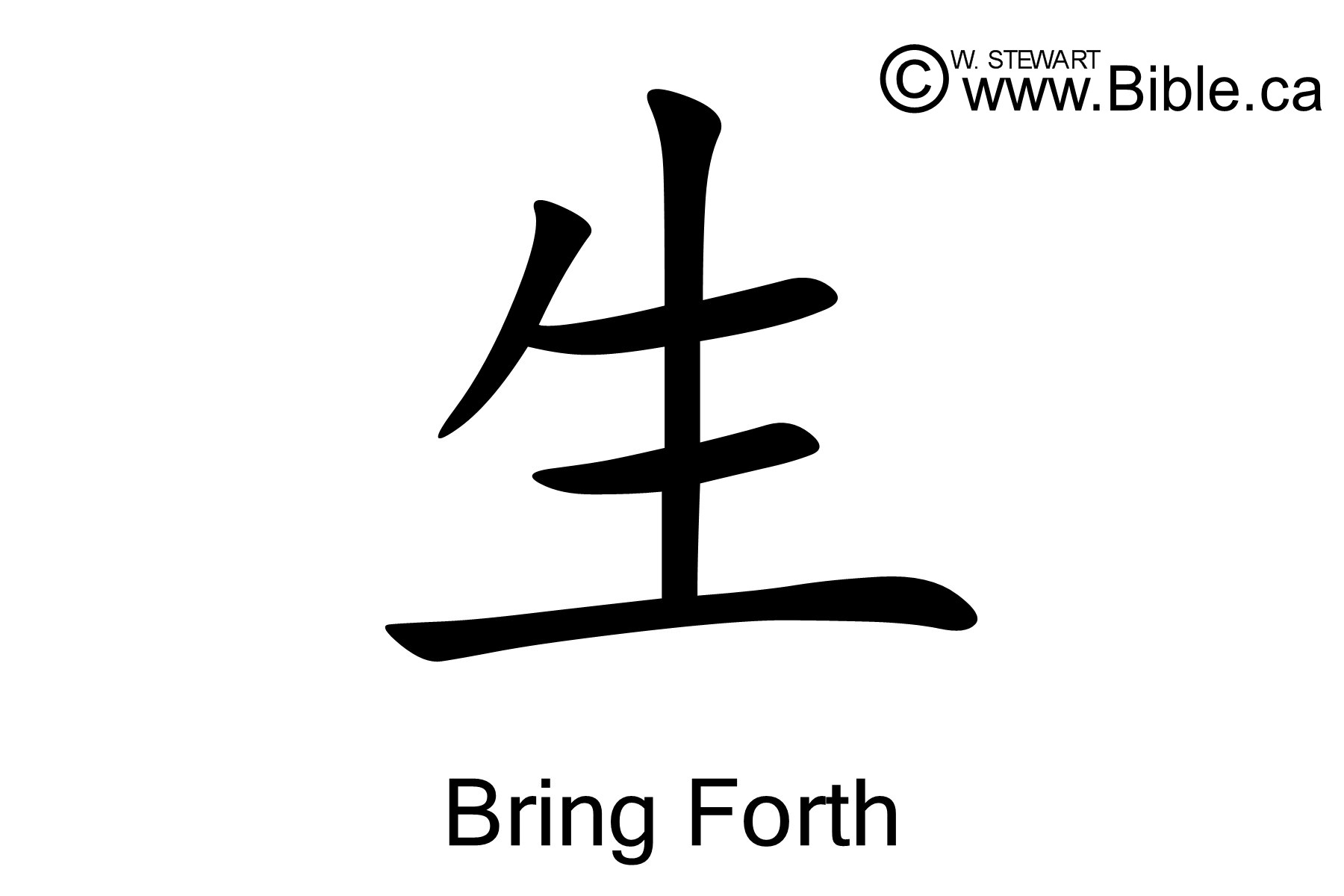
Bring Forth
Three times (Genesis 1:11, 20, 24, KJV), the Bible account of creation uses the phrase "bring forth." Combined, these texts reveal several things which were brought forth in the sea, on the land, and in the air. The Chinese word sheng means to BRING FORTH or LIFE. It is suggested by Kang and Nelson, authors of The Discovery of Genesis, that the three horizontal strokes in sheng represent the heaven, earth, sea and the creatures and vegetation brought forth in them.2
The radical on the left side of sheng is important. It is called p'ieh, and appears to be used as an abbreviated form of sheng in several other words to indicate life or activity. We shall see some of these words below.

Create
A Chinese word for CREATE, zào, unmistakably shows the creation of man. It is a combination of WALK and TALK. Adam was created a full grown man, able both to walk and talk. But the word TALK (gào) breaks down further, with compelling details that leave no doubt it is Adam being pictured. He is revealed to be the LIVING DUST MAN! That is exactly what the Bible reveals in Genesis 2:7 (NKJV),
And the Lord God formed man of the dust of the ground and breathed into his nostrils the breath of life, and man became a living being.

First
Xian, a Chinese word for FIRST, pictures Adam as the first man. The etymology of the word, like gào above, reveals a LIVING DUST MAN. You will notice the character for MAN is different here than above. There are several different images which can be used to represent a man. Most of them will appear throughout this article.
Ancestor
Being the first man, Adam is our universal ancestor. Zu, a Chinese word for ANCESTOR, reveals details about Adam's nature. The components of the word literally reveal Adam to be GOD MOREOVER. Consider what God said about the creation of Adam:
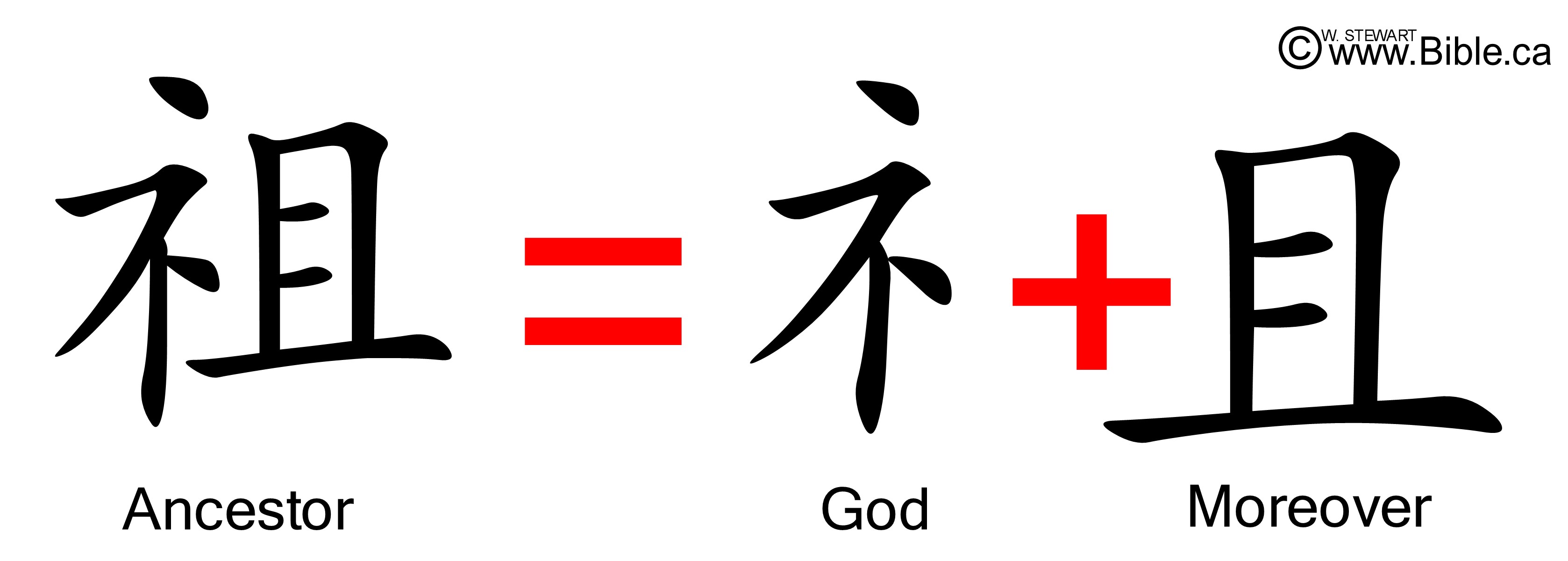
And God said, 'Let us make man in Our image, according to Our likeness...' So God created man in His own image; in the image of God He created him; male and female He created them. (Genesis 1:26-27, NKJV)
Necessary
Genesis 2 reveals that Adam was alone for a short time, the only human on the earth. God said,
It is not good that man should be alone; I will make him a helper comparable to him. (Genesis 2:18, NKJV)

It was NECESSARY that Adam have a companion. There was no suitable companion among the animals of creation (Genesis 2:19-20), thus God provided woman for man. A Chinese word for NECESSARY, yào, shows ONE MAN in the garden ENCLOSURE who needed a WOMAN.
Flesh & Inside
The Bible tells us of the operation God performed on Adam, the result being his companion, Eve.
And the LORD God caused a deep sleep to fall on Adam, and he slept; and He took one of his ribs, and closed up the flesh in its place. Then the rib which the LORD God had taken from man He made into a woman, and He brought her to the man. And Adam said: 'This is now bone of my bones and flesh of my flesh; she shall be called woman, because she was taken out of man.' (Genesis 2:21-23, NKJV)

The ancient Chinese recorded this operation in the word ròu, which means FLESH. It shows one PERSON taken from the BORDER of a second PERSON's body. God took a rib from Adam's side, closed up his FLESH, and from the rib made woman.

Pictorially related to ròu is the word nèi which means INSIDE. The two characters that combine to make nèi are ENTER and BORDER. The Genesis account says that woman "...was taken out of man." That would make her the INSIDE man. Nèi is still used among Chinese men to refer to their wives, literally, she is "my INSIDE man."3

Beginning & Complete
These two people, Adam and his wife are recorded in a Chinese word for BEGINNING. The etymology of yuán literally shows TWO PEOPLE. If we take yuán and add a ROOF to it, we get the word wán, which means FINISH or COMPLETE. After Adam and Eve were created, the work of creation was finished. The Genesis account concurs, indicating right after discussing the creation of Adam and Eve,
Thus the heavens and the earth, and all the host of them were finished. (Genesis 2:1, NKJV)Not only does wán reveal that creation was finished when Adam and Eve had been made, but it also pictures their relationship, as they were two people under the same roof, a married couple.
Therefore a man shall leave his father and mother and be joined to his wife, and they shall become one flesh. (Genesis 2:24, NKJV)
Naked
The last statement made in the Genesis creation account reads:
And they were both naked, the man and his wife, and were not ashamed. (Genesis 2:25, NKJV)

Guang guang is one of four Chinese words in this project which means NAKED. This image pictures the shameless nakedness of Adam and Eve as spoken of in Genesis 2:25. Together, the two characters mean NAKED, but each one individually (guang) means LIGHT or BRIGHT. You can see a person in the base of guang (highlighted in yellow)! 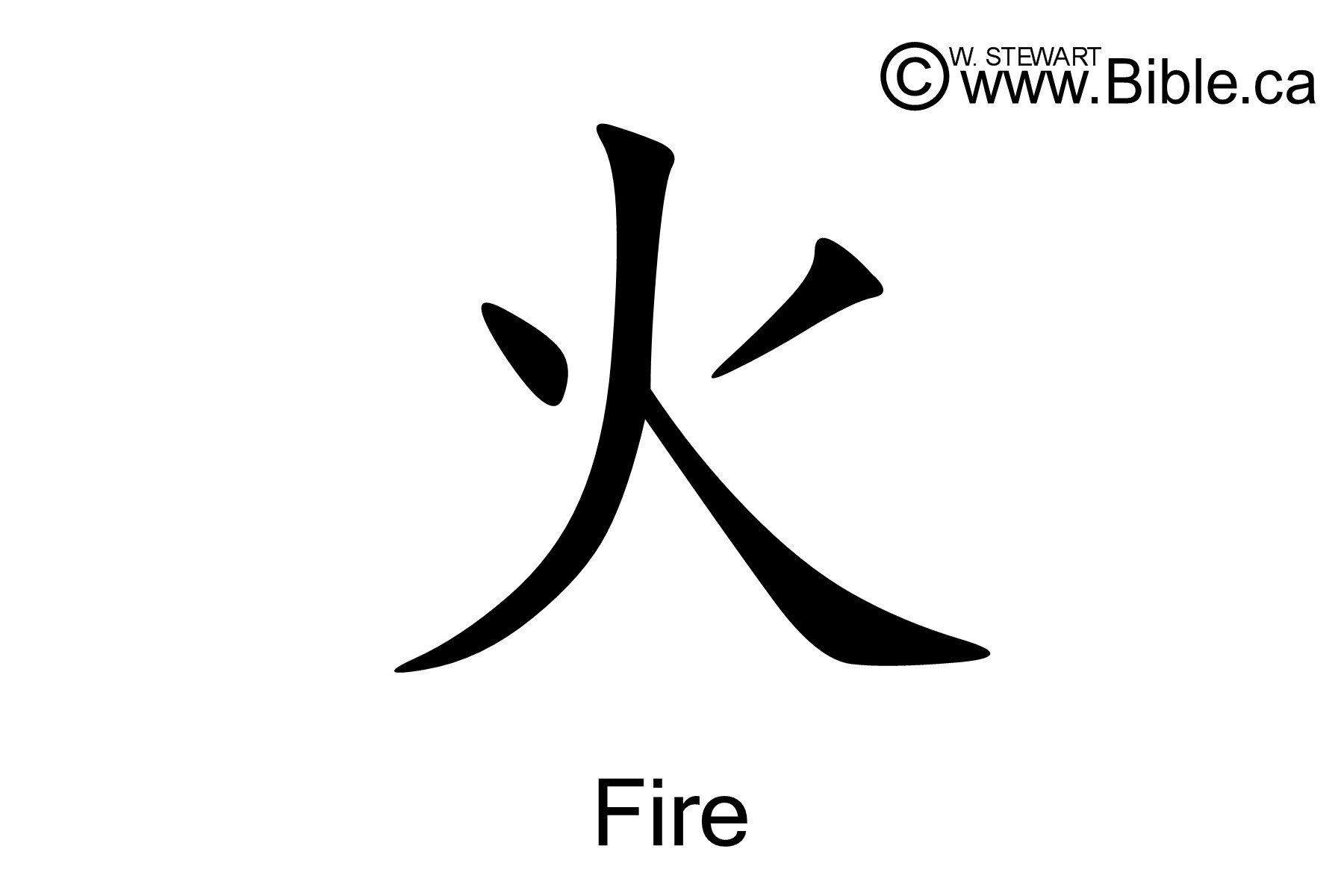 The upper portion of guang is not a stand alone word, nor does it appear to be an abbreviation for another word. It is a common thing when we draw a picture of the sun to represent the rays of light coming from it with a series of hash marks surrounding it. The image guang seems to indicate the same about Adam and Eve, there was a radiance coming from these sinless people! A comparable character, using a different form of man as it's base is huo (FIRE). A single guang shows Adam or Eve in their state of briliant perfection, but when they are placed side by side, the ancient Chinese pictographers established a reminder that these two radiant people were naked, without sin or shame, just as Moses confirms in the Genesis record.
The upper portion of guang is not a stand alone word, nor does it appear to be an abbreviation for another word. It is a common thing when we draw a picture of the sun to represent the rays of light coming from it with a series of hash marks surrounding it. The image guang seems to indicate the same about Adam and Eve, there was a radiance coming from these sinless people! A comparable character, using a different form of man as it's base is huo (FIRE). A single guang shows Adam or Eve in their state of briliant perfection, but when they are placed side by side, the ancient Chinese pictographers established a reminder that these two radiant people were naked, without sin or shame, just as Moses confirms in the Genesis record.
Do you see the common link between yào (NECESSARY), ròu (FLESH), yuán (BEGINNING), wán (FINISH | COMPLETE), and guang guang (NAKED)? All five of these Chinese characters have two people in them - Adam and Eve. There are a number of images in the Chinese language that have two people in them. We'll note a few more here.

Sit
Zuò is a Chinese word for SIT. Of course, sitting in an individual action, and yet look how the ancient Chinese rendered it. We see two PEOPLE upon the EARTH. What logical reason can there be for zuò to picture two people rather than one? Is it perhaps a reference to the first two people, who sat together upon the land?

All | Whole
One of several words which can be used to speak of ALL or the WHOLE is qian. As we have noted already, there were just two people in the beginning. In this image, again we see two people, each represented with a mouth and legs - two of the basic characters we've seen used for a person. These two people TOGETHER made up the WHOLE population of the earth at the time.

Perfect
Another Chinese character which pictures two people is rén, which means PERFECT. The image literally shows TWO PEOPLE. Why? What do two people have to do with perfection, unless it be a reference to the first two people, Adam and Eve, who were created perfect?
There are a host of Chinese characters which are based upon two people. Most of them have no apparent reason for including two people. It seems that several are records of Adam and Eve, the first two people on the face of the earth.
by William J. Stewart
Endnotes:
1. Creation Stories from around the World, Fourth Ed., p. 29
2. The Discovery of Genesis, p. 40, Ethel R. Nelson & C.H. Kang
3. The Discovery of Genesis, p. 47, Ethel R. Nelson & C.H. Kang
| God in the Chinese Language | << Previous | Next >> | The Garden of Eden |
